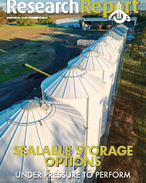This article is 4 years old. Images might not display.
The best practice guide was developed through industry collaboration, including a survey of relevant stakeholders and land managers to understand the complex networks involved in weed management.
The survey established that three-quarters of respondents employed contractors to work on their land, with a range of formal and informal weed hygiene control mechanisms in place. However, only a few admitted to auditing their contractors annually or more often, with many reporting they have never conducted an audit.
The aim of the guide is to improve the operations of staff and contractors, providing appropriate oversight and strategies to prevent the spread of weeds. The VSTWP says the guide is a vital link in managing serrated tussock across Victoria.
The guide acknowledges that land managers spend millions of dollars each year controlling serrated tussock and other weed species in Victoria.
Of all the management activities for serrated tussock and other high threat weeds, reducing spread is the cheapest and most effective method of control.
VSTWP chairperson, Lance Jennison, said this guide is split into easy-to-use sections that provide practical guidance on identifying and controlling serrated tussock, weed hygiene practices in the field, along with contract management and oversight.
"The best practice guide will prove invaluable for landowners, land managers, contractors and large-scale projects, with plenty of strategies to minimise the spread of serrated tussock," Jennison said.
Serrated tussock is a hardy and aggressive grassy weed which is found throughout temperate regions of Victoria, New South Wales and Tasmania.
Serrated tussock has a devastating impact on the biodiversity of native grasslands and can drastically reduce the carrying capacity of farmland. Seed can be easily spread through civil construction works, land management activities, and via livestock and wildlife.
The newly published weed hygiene guide can be viewed by visiting: http://www.serratedtussock.com/management/reducing-spread
Hard copies are also available on request.























